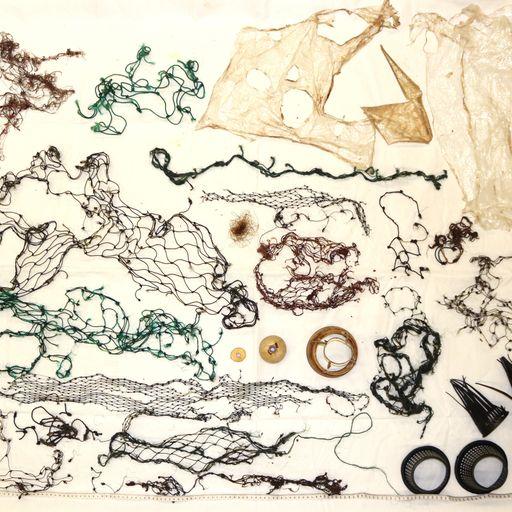There’s this odd thing about Hawaiian volcanic activity—secondary
volcanism.
This is the appearance of new eruptions long after the main
island-building volcanic activity is done. It is also called rejuvenated volcanism.
Think Diamond Head on O’ahu, Lehua Island off Ni’ihau, and all the cinder and tuff cones around Koloa on Kaua’i, which are clearly different-looking than
the landscape around them. And which date much, much younger than the lavas
around them.
Why does that new lava suddenly force its ways through
million-year-old rock? Traditionally, there are three theories, and rather than going through them here, you can check out Volcano Watch.
Now a team of geologists from Hawai’i, Wisconsin and the United
Kingdom have proposed an intriguing additional reason: dramatic sea level change.
The new report published by the Geological Society of
America was written by Brian R. Jicha of the University of Wisconsin-Madison, Michael
O. Garcia of the University of Hawai’i, and Charline Lormand of Durham
University in the UK. It is entitled, “A possible sea-level fall trigger for
the youngest rejuvenated volcanism in Hawaiʻi.”
(Citation: Jicha, Brian R., Michael O. Garcia, and
Charline Lormand. "A possible sea-level fall trigger for the youngest
rejuvenated volcanism in Hawaiʻi." GSA Bulletin (2023).)
Garcia makes the point that this is not an alternative but an additional theory, and that different rejuvenated volcanic activity might be associated with different mechanisms.
One of their key pieces of evidence, at volcanic hot spots around
the globe, is that when sea levels have fallen significantly, geological dating
shows that oceanic volcanoes have erupted in this kind of late stage volcanic activity.
During a period 350,000 years ago, sea levels dropped 300
feet below current levels—and there were corresponding eruptions on Kaua’i,
Molokai and Ascension Island in the South Atlantic.
When sea levels dropped about 200 feet about 225,000 years
ago, there was volcanic activity on Kaua’i.
When they dropped nearly 300 feet 150,000 years ago,
volcanoes erupted on Kaua’i and in Samoa.
When they dropped 300 feet about 60,000 years ago, there were
eruptions at Ascension Island, Fogo in the Cape Verde Islands, and on O’ahu. The O'ahu eruptions were at Tantalus on O’ahu and in a region called the Koko Rift.
(A caveat: Volcanoes don't always respond this way. There was another low sea level period about 25,000 years
ago, when Fogo, Samoa and Tristan de Cunha in the South Atlantic erupted, but Hawaiian
volcanoes apparently didn’t engage in rejuvenated volcanism. And there was an unusual Kaua’i eruption about 320,000 years ago when sea levels were comparatively high, which doesn’t follow the trend.)
This kind of volcanic activity seems less likely to occur when
sea levels are high. But they do when it’s low. The theory is that lower sea
levels create stresses in the earth’s crust, and those let the magma force its way
into dikes and sometimes to the surface.
“Numerical modeling indicates that when sea level falls 40
m (40 meters, or about 120 feet) below the present-day level, the induced
tensile stresses trigger dike injections. If sea level continues to fall to -70
or -90 m (210-270 feet) the induced tensile stress is inferred to allow dikes
to reach the surface and erupt,” the researchers wrote.
They did extensive work on the Koko Rift, an 18-kilometer line of volcanic
activity that runs an axis from Koko Head and Koko Crater across the Ko’olau ridge to Kāohikaipu Island off Makapu’u. All the several volcanoes along that line erupted about the same
time, roughly 67,000 years ago: “The Koko Rift eruptions are analytically
indistinguishable in age,” they wrote.
The Koko Rift volcanics are also the most recent examples of secondary or
rejuvenated volcanism in Hawai’i—younger than the cinder or tuff cones
elsewhere on O’ahu or on the other islands.
There have been other suggested explanations for secondary
volcanic activity, but this one seems to be a good fit.
“Oscillations in sea level were recently recognized as a
potential key mechanism for modulating volcanism by causing crustal stress from
loading and unloading in ocean regions,” they wrote.
The low sea level periods are associated with ice ages—periods
when vast amounts of the planet’s water is locked up in ice caps, glaciers and
snow fields.
Certainly, sea levels aren’t the only cause of eruptions, and as mentioned earlier, there are cases of rejuvenated volcanism outside low stands of the sea.
And there is certainly plenty of eruptive activity during high sea level periods now, including the ongoing Kīlauea
eruption, the recent Mauna Loa eruption, historic eruptions at Kama’ehuakanaloa
(formerly Lō’ihi),
Hualālai
and Haleakalā,
and a possible 1956 eruption in the Ka’ie’ie Channel between Kaua’i and O’ahu.
The authors of the rejuvenated volcanism paper concluded: “Future
investigations of rejuvenated volcanism in Hawai‘i and globally should also
consider the long-term influence of the Earth’s climate system on magmatic
processes to better infer past and future eruptive behavior.”
It is also true that advances in science are driving new revelations, Garcia said in an email: "We are continuing to better understand secondary volcanism with an ongoing study of the age and geochemistry of Honolulu lavas. One might think that after more than 100 years of studying these lavas that we would fully understand them but new, more precise analytical methods are allowing us to gain a better understanding."
© Jan TenBruggencate 2023




